
This goes without saying – BlackBerry’s physical QWERTY keyboard experience is unmatched in the smartphone industry. Although, full touchscreen phones are the trend today, there are users who still long for a physical QWERTY.
Keeping this in mind, BlackBerry combined the same physical keyboard experience with its latest BlackBerry 10 OS on the BlackBerry Q10. Interestingly, it is the only device after BlackBerry’s full touch Z10 (our review) to run the new BlackBerry OS.
Design:

At first glance, you could easily mistake the phone to the fleet of BlackBerry OS 7-powered QWERTY devices but there are little nuances that makes it different from the rest of the crowd. For instance, the physical call/end, menu, back keys and the track pad have been given the boot. These features are now carried out by the 3.1-inch touchscreen display. The back features a unique glass-weave design, which BlackBerry says “has been years in development” and in retrospect looks good on the device.


On the front, the BlackBerry Q10 sports a display, a physical QWERTY keyboard which we’ll talk about in detail in a bit, 2MP front-facing camera; right side featuring volume and voice control keys; bottom with the loudspeaker; left hand side with the microUSB and microHDMI ports; and the top side with the 3.5mm headphone jack and Power/Lock button. Back of the Q10 features an 8MP camera with LED flash.

To cut the long story short – Q10 looks like a BlackBerry but the company has taken extra care to make it look premium and is clearly evident in the design.
Keyboard:

The BlackBerry Q10 features a four-row physical QWERTY keyboard and are separated with frets that makes it easier to find the actual key and type faster. Although gesture swiping on a virtual keyboard is a bit faster than typing each alphabet, having a physical keyboard has its own advantages. The Q10 still retains the same BlackBerry keyboard experience and since these keys are slightly bigger than its predecessors, it makes it easier and comfortable to type on.
The Q10 also supports live suggestions and corrections that can be easily selected on the display.
Hardware:
The BlackBerry Q10 features a potent hardware for smooth functioning of the BlackBerry 10 OS. The phone features Qualcomm’s dual-core 1.5GHz Snapdragon S4 processor and 2GB RAM. The display is an OLED one that measures 3.1-inches and has a resolution of 720×720 pixels, achieving a pixel density of 330ppi that results in crisp text. Another good thing about the Q10 is that it supports 4G LTE, which can be used when you’re travelling abroad.
Software:
The BlackBerry Q10 runs on the BlackBerry 10 OS and given how the new operating system is more touch-centric, BlackBerry has done a good job integrating it. The Q10 takes advantage of the gestures, which BlackBerry 10 OS supports out of the box. For instance, swiping from the bottom edge of the screen will unlock the phone or swiping finger from the bottom to right will reveal the BlackBerry Hub from anywhere.
Speaking of BlackBerry Hub, the feature remains unchanged from what we saw during the Z10 review. As the name implies, its the central location where a user can quickly take a look at all the email and social accounts (now includes Whatsapp), calls and messages.
BlackBerry Remember and BlackBerry Balance are the next two features with Remember allowing users to organise notes, interests, ideas in one place while Balance keeps the personal and the workspace separated from each other. One thing to note here is that to make BlackBerry Balance to work, a user needs to have BES enabled.
The apps can be downloaded from BlackBerry World, which may not be much when you compare it with other platforms’ App Store but most of the popular apps for Q10 are here. BlackBerry also confirmed to be working with developers to bring more apps to BlackBerry 10.
Camera and Multimedia:

The Q10 comes with an 8MP autofocus camera at the back and a 2MP camera on the front. The main camera is pretty good to take still pictures with good colour reproduction and low noise levels. The camera can even record videos in full HD 1080p resolution. Interestingly, by default, the camera shoots images in 1:1 aspect ratio but users can also select to capture an image in 4:3 and 16:9 aspect ratio that will change the final resolution. Burst Mode captures images in quick succession and the best part is Q10 didn’t flinch once when I tried taking over 200 burst shots at once.
Time Shift mode is another interesting feature introduced in the BlackBerry 10. When activated, it allows to click few pictures quickly and swap different expressions of the person to make it a perfect picture.
 |
| BlackBerry Q10 Sample Shots |
The built-in music and video app handles all the multimedia content. Although the music app is basic, it supports most of the audio formats while video player effortlessly handles the videos.
There’s even a microHDMI port, which you can connect to a larger screen.
Battery Life:

The phone features a removable 2100mAh battery and it offers a great battery life. We could easily go around a day and a half with lots of surfing, emailing and music before having it to charge again.
Conclusion:
Here’s the most important question to answer – Is the phone worth it? Well, if we take just the feature set into consideration, BlackBerry Q10 is a great device, no doubt. Excellent keyboard, decent OS and a good battery life. But as a consumer with Rs. 45,000 to spend, will he go for a BlackBerry Q10 compared to other options like Apple iPhone 5, Samsung Galaxy S4 and HTC One selling at around the same price? Don’t think so. Admittedly, Q10 goes for a niche crowd but then targeting a certain set of users won’t make BlackBerry fit to survive the competition as its evident with the recent quarterly result. What BlackBerry needs to give their great physical keyboard and BlackBerry 10 in as many hands as possible. Perhaps, the launch of BlackBerry Q5 will be the answer.
Rating: 
Pros: Keyboard, Battery Life
Cons: Price
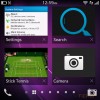

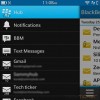
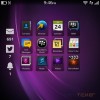

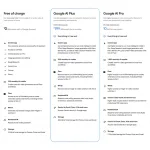
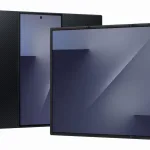
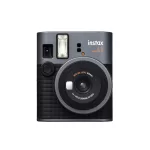
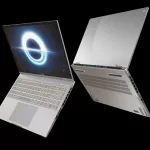

Leave a Reply